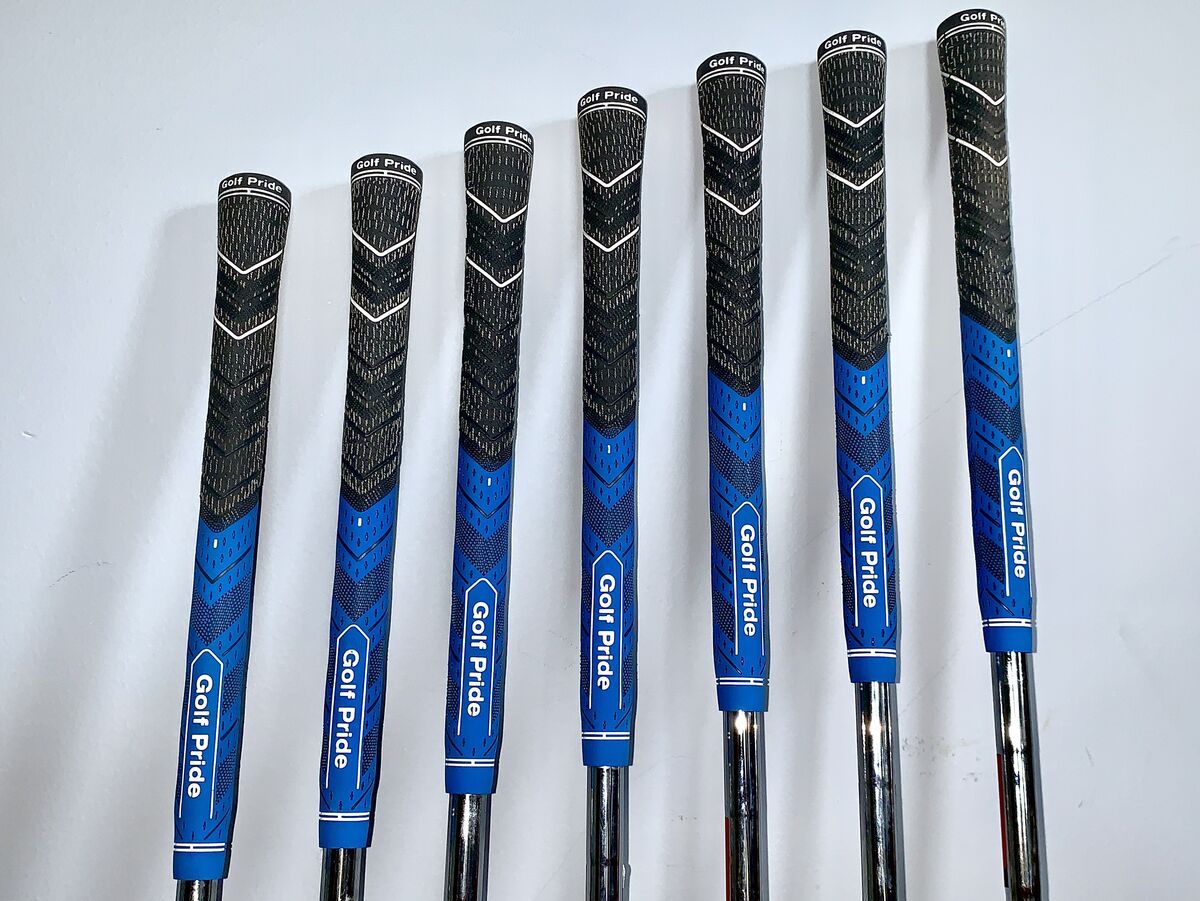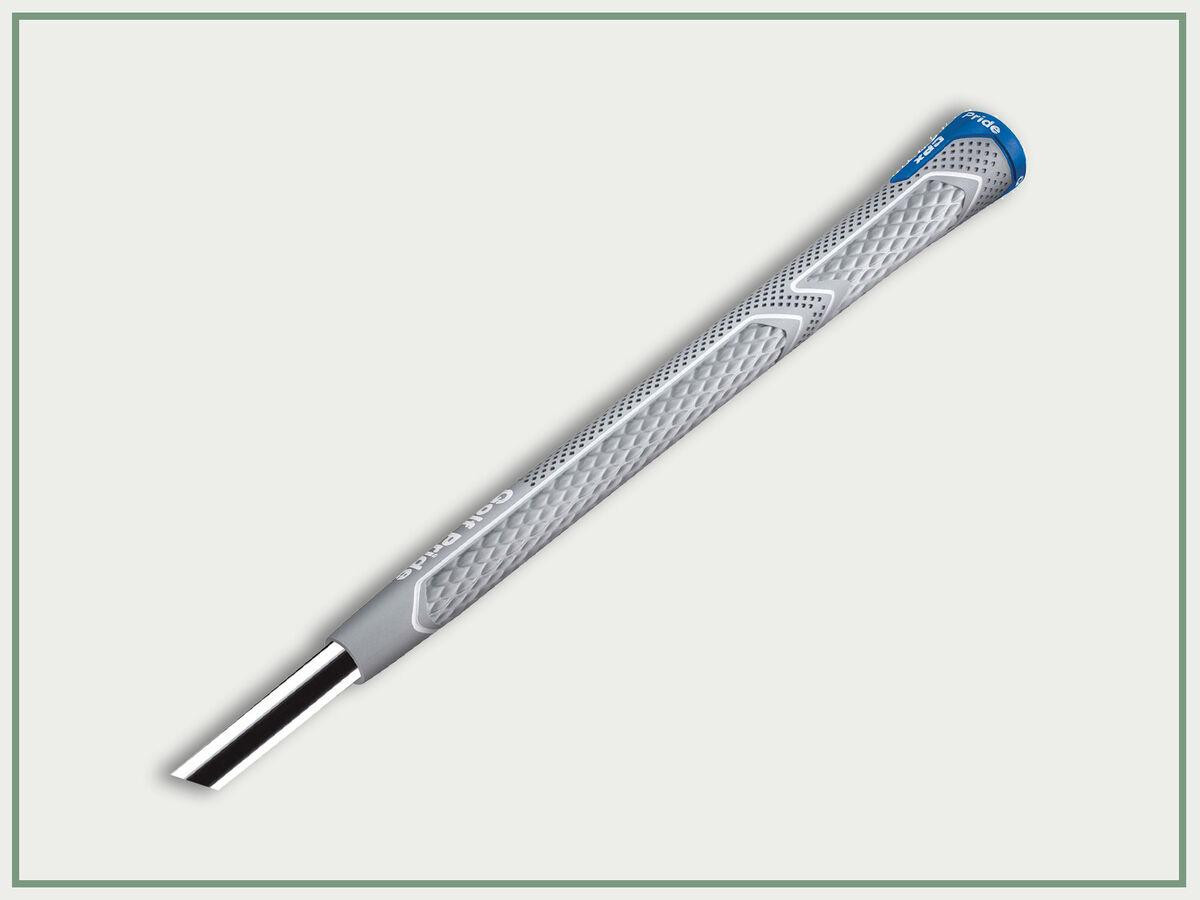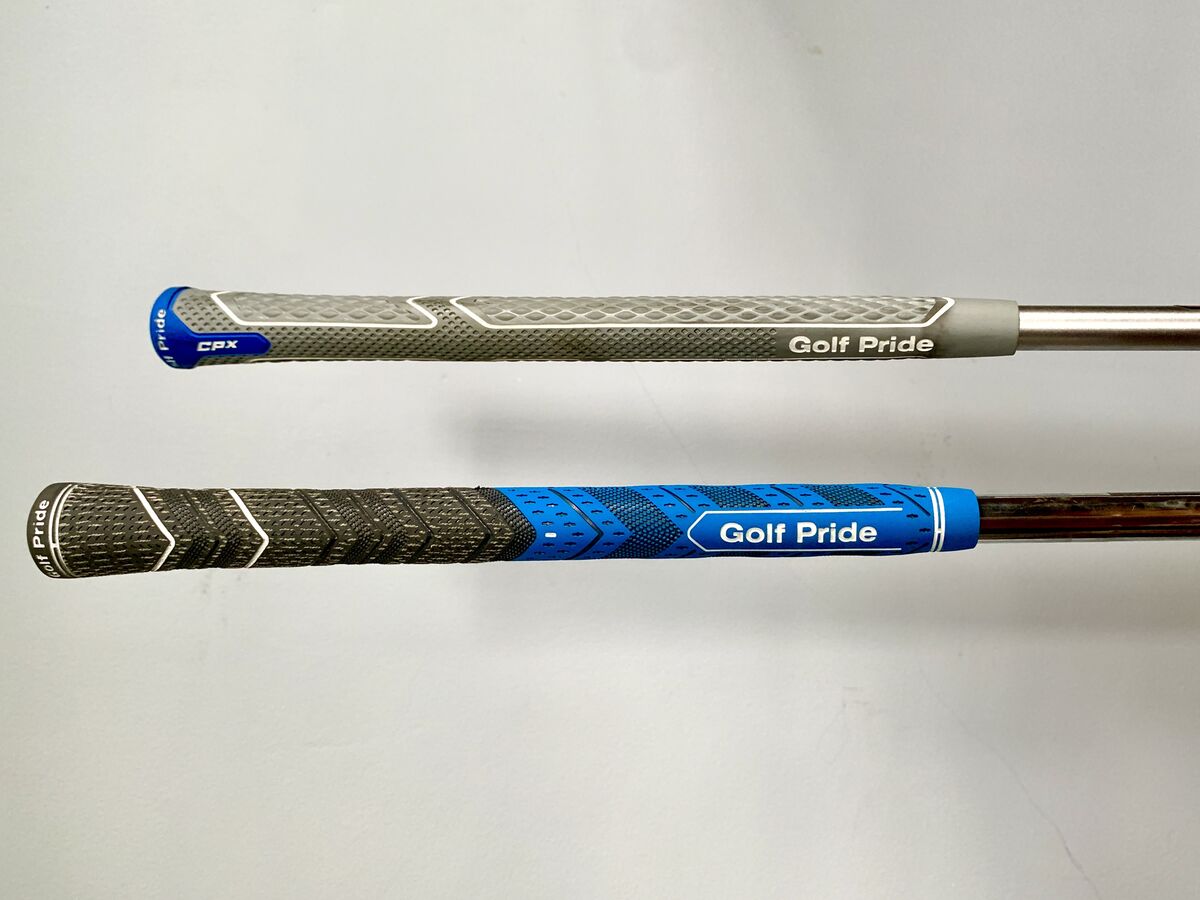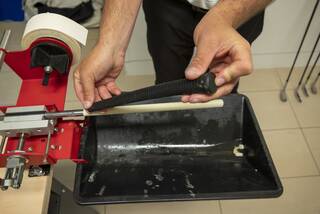Time to Step Up Your Grips: An Inside Look at Golf Pride Grips

Golf Pride MCC Plus 4 golf grips
There’s a 90 percent chance your golf clubs need new grips.
At least, that’s Andy Erikson’s ballpark estimate, and as Golf Pride Grips’ Director of Global Product Innovation, he pays more attention to people's grips than most. Part of the problem, as Andy explains, is just that: golfer’s simply don’t pay much attention to their grips.
“For most consumers, golf grips are not top of mind. We know that,” he said. “A lot of people do not even view the golf grip as a piece of performance equipment.”
But if golfers don’t think much about their grips, why is Golf Pride – with it’s new 35,000+ square-foot headquarters next to Pinehurst No. 8 – investing so much into creating a portfolio of performance golf grips that fit every type of golfer?
“Because for those individuals that are interested in performance, it does matter. Size matters, model matters, reminder grips matter,” Erikson said.
If you’re among the roughly 90 percent, give or take, of players using worn grips, the wrong-size grips, or various grip types from one club to the next, you could benefit from paying a little more attention to your grips.
To quantify just that, Golf Pride had golfers hit 7-irons on a Trackman with slightly worn grips. Then they swapped out the club for one with a fresh grip and saw an average gain of two yards of carry distance.
“That’s just the tip of the iceberg,” Erikson said.
That’s why Golf Pride is innovating the golf grip, even when golfers aren’t thinking about their grips.
Golf Pride CPX

Golf Pride CPX golf grip
CHECK PRICE AT AMAZON | CHECK PRICE AT GOLF GALAXY
How much innovation can really go into golf grips? Aren’t they all pretty much the same?
Take a quick look at Golf Pride’s CPX grip and you’ll see that golf grips can actually be quite different from one another.
“The CPX is the first time anybody that I can remember has done what we call exotexture. It’s not texture in, it’s texture out. It’s texture you can feel in your hands. It’s not the absence of material, it’s actually like those little pillows of material we’re putting in your hands,” Erikson explained.

Golf Pride MCC Plus 4 and CPX grips side by side
The CPX might look unlike any golf grip you’ve ever seen, but it would be a lie to say it’s unlike any grip you’ve ever seen. In fact, the inspiration for the CPX came from bike grips.
“That nugget of inspiration went back to my BMX days and just bike handles in general.”
The CPX is Golf Pride’s softest performance grip with that mountain bike grip pattern that Golf Pride dubbed its EXO Diamond-Quilted pattern, designed for comfort.
Golf Pride MCC Plus 4

Golf Pride MCC Plus 4 golf grip
CHECK PRICE AT AMAZON | CHECK PRICE AT GOLF GALAXY
The MCC Plus 4 is the youngest sibling in Golf Pride’s popular MCC collection, the MultiCompound hybrid grip. The Plus 4 is an MCC grip that replicates four wraps of tape on the lower hand. The MCC collection itself, a hybrid of cord and rubber, has been around almost 20 years, but that doesn’t stop Golf Pride from improving it behind the scenes.
“We've done lots of different things that have been invisible to the consumer on material development to make it more durable, to make it feel better, to dial in the tolerances on the weight,” Erikson explained.
One place Erikson and Golf Pride get inspiration for improvements is on tour, using lessons from what Erikson calls “extreme users” to guide innovation.
They noticed that on tour, about 90 percent of professional golfers played some sort of non-standard grip. Some stretch the grip as thin as possible to squeeze every once of feel out of every shot. Others would add layer after layer of tape to the bottom half of the grip in an effort to quiet the lower hand.
“Why make them put four wraps of tape underneath the lower hand? Why don't we just do that for them with material? That's how we arrived at the evolution from MCC to MCC Plus 4.”
When to Re-Grip Your Golf Clubs
Depending on how much golf you play, it’s a good rule of thumb to re-grip your clubs every year. That is, of course, an over-generalization. Some golfers play four times a year, some play 100, and that once-a-year suggestion doesn’t fit either of those groups.
If any of the following apply to you or your grips, it might be time to re-grip your clubs:
- You have multiple types (brands, models) of grips on different clubs
- You have different sized grips (standard, midsize, etc.) on different clubs
- Your grips are visibly worn, smoothing over, or tearing at the end
- Your grips have lost their grippiness
- Your grips don’t fit your hands
- Your grips don’t meet your firmness/softness preference
- Your grips don’t meet your style preferences

How to Regrip Your Golf Clubs for Under $100
How to Choose a Grip
We’ve established that most golfers are overdue for a re-gripping, but with tons of different grips to choose from, finding the right grip isn’t necessarily straightforward.
To choose your new grips, decide what you like and don’t like about your existing grip. Various grips offer different alignment aids, firm or softness profiles, and even different performance levels in moist or wet conditions.
A thinner grip will give you more feedback in your hands at impact, which many players like. Meanwhile, a thicker grip will dampen that feeling, but you may like how it makes the club feel in your hands.
Once you set your priorities in these areas, narrowing down the best grip for you becomes much easier. Once you do, you’ll likely find you have a few style and color options that can compliment your on-course look.
Don’t Take Your Grips for Granted
Sure, golf grips aren’t nearly as sexy as a brand new driver or a set of blades. It’s understandable that as a whole, golfers don’t get overly excited about their grips. But the golf grip is your only connection to the club, and between the sun (not to mention sunscreen), sweat and swings, your grips take a beating. If you ignore them, it can impact your game.